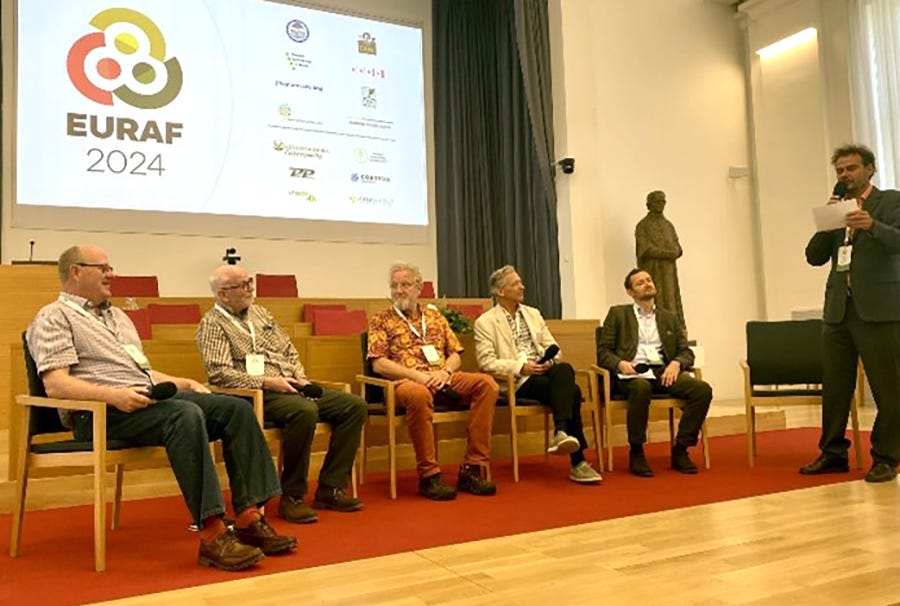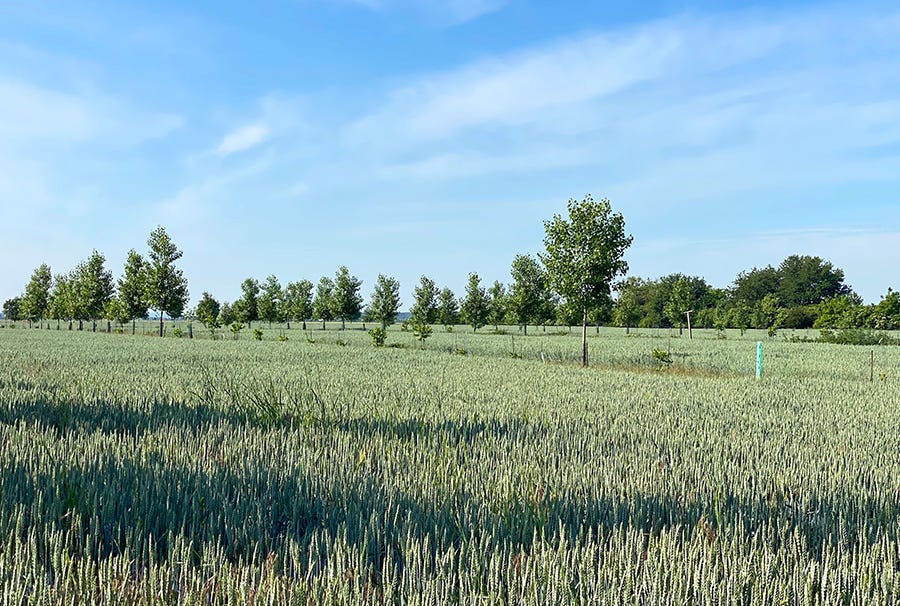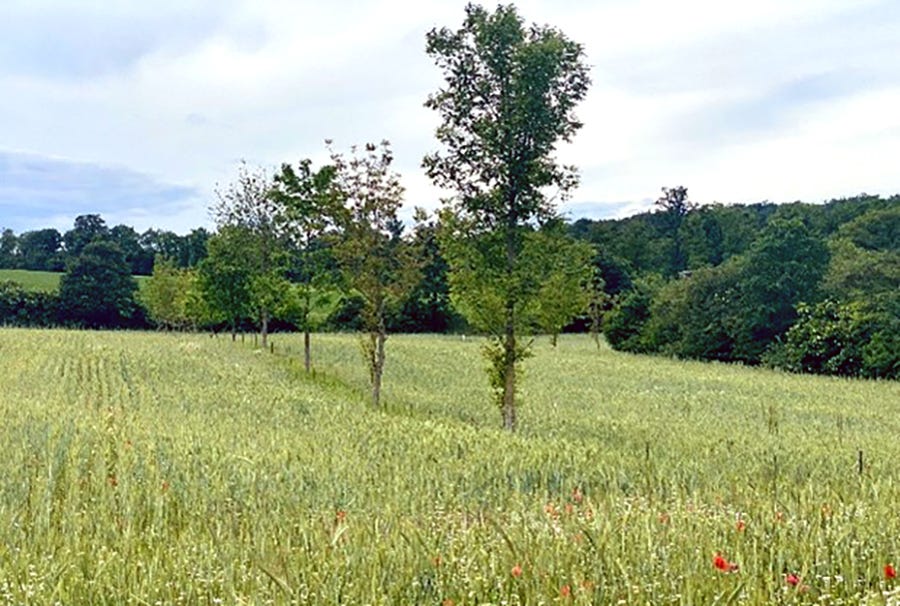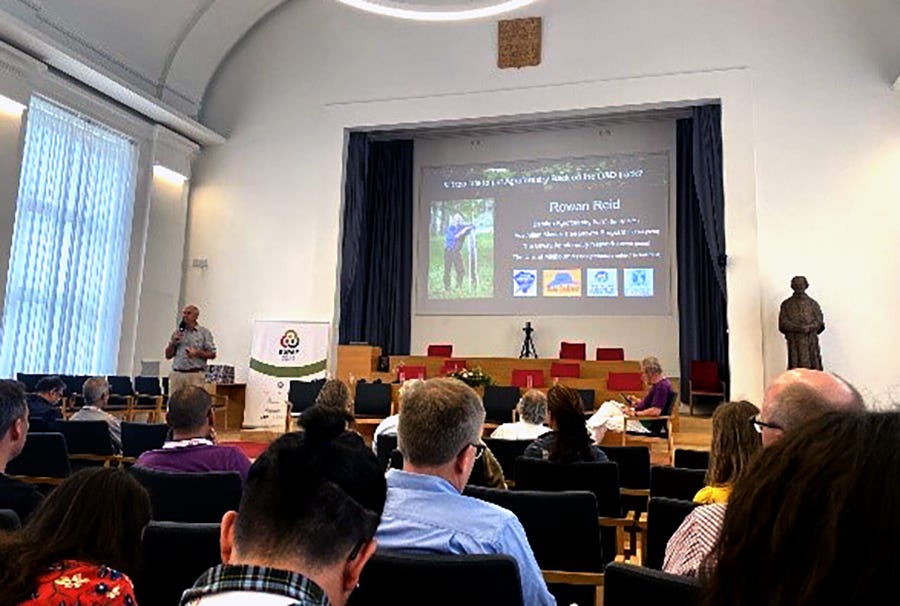Earlier this year, I started my PhD at Cranfield University on the life cycle assessment of alternative tree systems. The aim of my research is to understand the environmental, social and economic impacts of alternative tree systems such as orchards, agroforestry systems, shelterbelts and Miyawaki forests. My PhD will build on the pilot studies of the ‘Trees Outside Woodland’ project led by Defra, in partnership with The Tree Council and five local authorities.
As part of the my work, I had the opportunity to attend the 7th European Agroforestry Conference, which was held at Mendel University in Brno, Czech Republic. It is a biannual conference that aims to share recent research developments in the European agroforestry space.
The conference began with an Opening Ceremony, where speeches and presentations were given by special guests such as the European Commissioner for Agriculture, the Czech Republic Minister of Agriculture, and the Czech Republic Minister of the Environment. It was great to hear about the increased level of support being provided to Czech farmers and landowners to implement agroforestry systems.

In addition, keynote speakers were invited from all over Europe, as well as the United States. Their presentations gave an interesting overview of the challenges faced in each respective country regarding the adoption and establishment of agroforestry. It was highlighted that while European systems are typically established based on subsidy requirements, there are less subsidies available in the United States. As a result, the design of their systems is much more market driven, leading to distinct variations in agroforestry innovation and implementation in the United States compared to Europe.
Across the four days of the conference, there were more than 130 presentations across a variety of themes, including agroforestry and the environment, productivity, economics, and policy. Parallel sessions meant that it was impossible to hear every presentation, but the ones that I attended were very interesting. I particularly enjoyed the sessions on farmers’ experiences, which perfectly demonstrated how there is no ‘one size fits all’. Each agroforestry system is adapted to suit the local environment of each farm, as well as its intended ecological or productivity outcomes.
Another session which really stood out to me was about urban agroforestry. One presentation demonstrated a case study in Milan, Italy where two productive agroforestry systems have been established in a peri-urban area with the aim to get local residents involved to support a more regenerative supply chain (Dal Borgo et al., 2023). Another presentation focused on the increase in urban food forests in Sweden, and the potential they have to provide different services while also fulfilling urban sustainability policies. A book of abstracts is available online for all the presentations given during the conference.
There was also the opportunity to go on field trips to visit local agroforestry systems. I chose the silvoarable systems trip, which took us to sites located throughout the region of Southern Moravia, Czech Republic (see image) as well as in Northern Austria (see image). It was great to see more examples of agroforestry systems being successfully implemented, as well as hearing from the farmers about how they have made these systems work well for them.
The conference ended with a Closing Ceremony, which summarised some of the key outputs and learning points from the week. This included the approval of the Brno Agroforestry Declaration, which set out the key actions required to increase the adoption of agroforestry systems across Europe.
Another keynote presentation was given by Rowan Reid, who has successfully integrating trees on his farm in Australia since 1987. Rowan stressed the importance of farmers being involved throughout the process of planting trees on farms, as it is important that they are able to realise their own goals from implementing agroforestry, rather than only what other stakeholders hope to achieve.
Overall, I thoroughly enjoyed my experience at the European Agroforestry Conference, and I came away with a much better understanding of the challenges faced by European farmers, as well as what the current knowledge gaps are. I would like to thank the Farm Woodland Forum for awarding me a bursary that enabled me to attend, I am very grateful to have had this opportunity. I look forward to attending the next conference in Neuchâtel, Switzerland in 2026, where I will hopefully be able to present the results of my own PhD research.
Elsa Webb is a PhD Candidate at Cranfield University, assessing the life cycle of alternative tree systems.
MORE: Investigating novel approaches to tree planting by Jackie Shallcross









Really interesting to hear about urban agroforestry in Europe. This web page has lots of info about agroecological urbanism, towards which such projects can help to drive cities and towns https://www.agroecologicalurbanism.org/